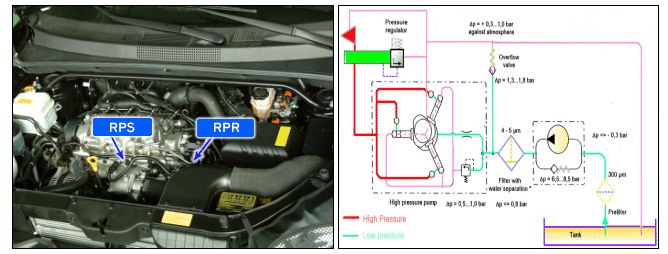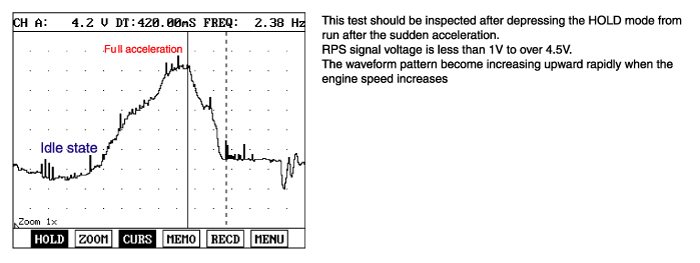

Fuel pressure monitoring is used to detect the troubles and the fuel leakage in high pressure system.
The ECM determines the rail pressure value as a function of the engine’s operating conditions and controls the fuel pressure regulator to ensure that the rail pressure reaches the required value.
Fuel pressure in the fuel line including the pumps and injector are continuously monitored during engine runing.
If the rail pressure is excessive, the fuel pressure regulator opens and a portion of the fuel is returned from the rail to the fuel tank via a collector line. If the rail pressure is too low, the fuel pressure regulator closes.
The fuel pressure regulator closes. the fuel pressure regulator is installed in the tail end of high pressure accumulator.
In case of the insufficient fuel supply in the fuel line, the engine symptoms will occur a shut down and a starting impossible.
If the fuel pressure monitoring in engine fuel pressure line generates threshold value, the ECM judged this as a fault and DTC is set.
Item | Detecting Condition | Possible Cause |
DTC Strategy | ● Rationality check | ● Faulty Fuel filter ● Faulty Electric fuel pump ● Faulty Injector ● Faulty FPR ● Faulty RPS ● Faulty ECM |
Enable Conditions | ● Case 1: 0 < Engine speed < 2400 rpm ● Case 2: Engine speed > 2800 rpm | |
Threshold Value | ● Case 1: Rail pressure < 120 bar ● Case 2: Rail pressure < 200 bar (Governor deviation at the high engine speed) | |
Diagnostic Time | ● 0.0012 sec. | |
MIL Fuel Limit Fuel Cut EGR Off | ● Yes ● Yes ● Yes ● No |
Rail Pressure | ||
Engine idle state | Fully acceleration (100%) | |
Rail Pressure | 220 ~ 320 bar (22 ~ 32 Mpa) | 1500 bar (150 Mpa) |
Signal Voltage | Below 1.7V | Approx. 4.5V |
